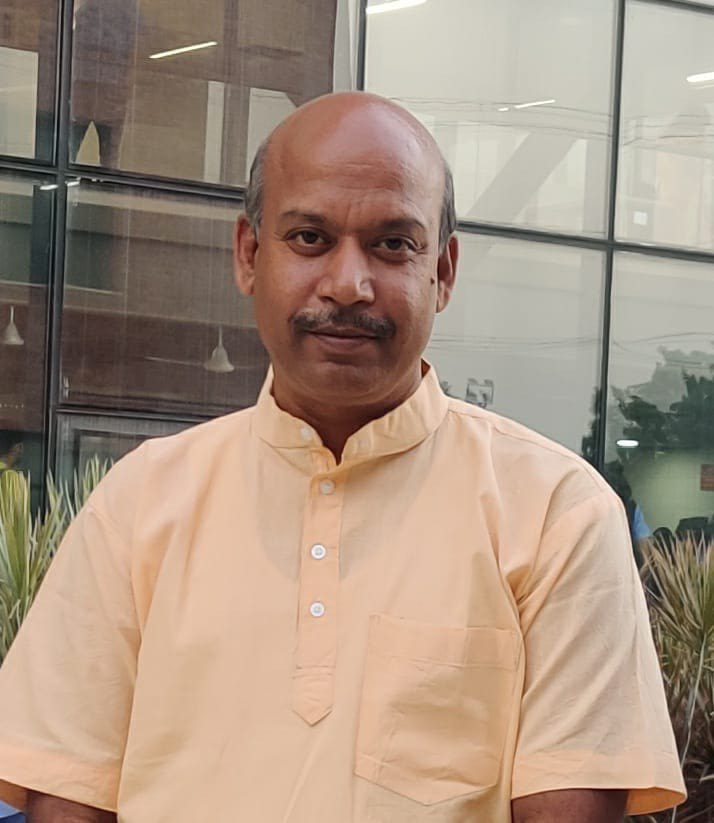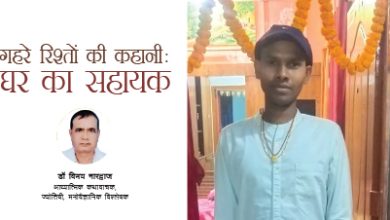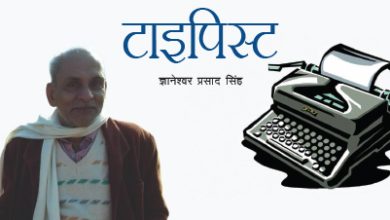JOURNEY OF A PASSIONATE SANSKRIT SCHOLAR: SAMPADANANDA MISHRA
By SN Poojitha

Sanskrit Sampadananda Mishra, a learned scholar a teacher, and an innovative Sanskrit content creator He wears many hats and fits them all and more. In his passionate life dedicated to the Sanskrit language, he has completed his doctorate from Utkal University, worked as Director of the “Sri Aurobindo Foundation of Indian Culture in Puducherry and currently is working as Dean of “Culture and director of the Center for Human Sciences at Rishihood University, Haryana. He runs a 24X7 Sanskrit radio channel “Divyavani”, has set up “Vande Mataram Library an open- source platform for Sanskrit scriptures and is the winner of the “Maharshi Badrayan Vyas Award” awarded by the President of India. Café Social reached out to him to know what inspires him on this passionate journey of Sanskrit learning and teaching
1. It’s always interesting to know how you grew up. You come from a family of Sanskrit Pandits. Do tell us a bit about your childhood and what inspired you to pursue a passionate career in Sanskrit.
I come from a very orthodox Brahmin family, my grandfather, Sri Parmanand Mishra who was a very famous pandit in my village, has instilled this interest in me. When I was 6-7 years old, he would teach me various Subhashitas and lines from Ramayana, Mahabharata, Gitaand some of the Sandhya Vandana Mantras. I used to accompany him to temples and ashrams and he would make me recite shlokas there and my grandfather insisted I take up a Sanskrit career.
2. What made you take the initiative to make children learn Sanskrit easily?
I moved Pondicherry in in the year 1993, to pursue my M. Phil and settled there. The mother of Shri Aurobindo Ashram, who was the spiritual collaborator of Sanskrit had announced that. every child born in India must learn Sanskrit just as every child born in France has to leam French and this statement got imprinted in me. I started my initiatives of small workshops and taught Sanskrit in a simple manner, creating modules for the youths. We started with five or six teachers and today, the school has grown and has around 50 branches with more than 100 teachers in India.

We developed a very unique curriculum called the Devo Bhasha. It’s an entirely pedagogy-based curriculum with simple tests, wherein there is no hardcore grammar or grammatical terminology Like a child learning one’s mother tongue, they learn Sanskrit in an activity-based manner.
3. We wanted to know what inspired you to launch the Sanskrit radio “Divyavani” a 24X7 Sanskrit radio channel.
In the early 2000’s not much content was available digitally. I was hospitalized for 1 month because of an accident I could not move although my mind was working, during this time I started thinking of a solution to this issue. First, I thought I would have some digital content uploaded onto website, but then there was another friend of mine who was technically sound suggested a radio channel and we launched the “Divyavani” channel which has been extremely popular with 1.5 lakh people listening every month which has Shubasithas, humorous stories, plays, recitals etc.
4. Please explain to our readers how Sanskrit as a language is linked to the evolution of human speech.
Sanskrit is considered a key language in understanding the evolution of human speech due to its rich linguistic history and the systematic way in which its root sounds are organized. Panini, a Sanskrit Brahmin, provided a list of approximately 2,000 root sounds in his work called Ashtadhyay!, with an appendix known as Dhatupata. These root sounds served as the building blocks for creating an extensive vocabulary, exceeding 300 million words. The 46 seed sounds, or beej sounds, form the basis of Sanskrit’s phonetic system and can give rise to a multitude of root sounds. For example, combining the seed sound “a” with “kar” yields the root sound “akar.” The meanings associated with these root sounds are essential in understanding human speech and carry specific experiences and connotations and provides valuable clues into the principles that guided. human consciousness in shaping language.

I wrote a book titled “The wonder that is Sanskrit because when I started addressing the youth and found very little interest it triggered me to start my research on it and discovered many fascinating things in Sanskrit. For example, I would ask, do you know how many different properties of water you are aware of? most would say, 3-4 properties of water. But Sanskrit has more than 200 different words for water
If one analyses each each of these different words, one discovers different properties, auras, and. qualities of the object. Every word in Sanskrit describes the property functionality and the nature of the object that it is referring to.
5. Do tell us more about your book “Shanaih Shanaih” – A book of rhyming songs in Sanskrit for children for which you got Kendra Sahitya Akademi Bala Puraskar in 2018.
Let me share a personal anecdote that inspired me to write it. One day, I returned home from the office, and my daughter, affectionately calling me “papuni,” expressed her desire to play with me before bedtime. She decided to teach me specific clapping patterns, creating a song around them with a rhythm that fascinated her although the lyrics had little meaning. The experience left profound impact on me. That night, unable to sleep, I crafted four poems using the same clapping patterns my daughter had taught me. The next day, I played these songs with her, and they became a popular choice during birthday celebrations with her classmates, “Shanaih Shanaih” is a compilation of such rhyming songs In Sanskrit, offering Innovative and engaging compositions
6. On a closing note, please tell us. why parents should think of teaching their children Sanskrit in this age of technology and multiculturism and how to get them to have an interest in it.
By the very design, Sanskrit is different and unique it is rhythmic and systematic. Hence linguistic ability, logical thinking, original thought power and cognitive components like memory, concentration, observation, creativity, and imagination get triggered well when children listen to Sanskrit and their speech clarity also gets enhanced. I created a Facebook page called Samskrita Balasahitya Parishad in 2014, wherein we keep updating beautiful posters and Sanskrit content suitable for children. Some of the videos get more than 3 lakh views within 2-3 days of posting It shows that there is a deep interest among the people if we can bring out Sanskrit in a simple, engaging, and innovative manner It shows that with good engaging content and a slight push from parents, children would start liking and learning passionately.
https://twitter.com/Sampadananda
@Sampadananda
Sampadananda Mishra







